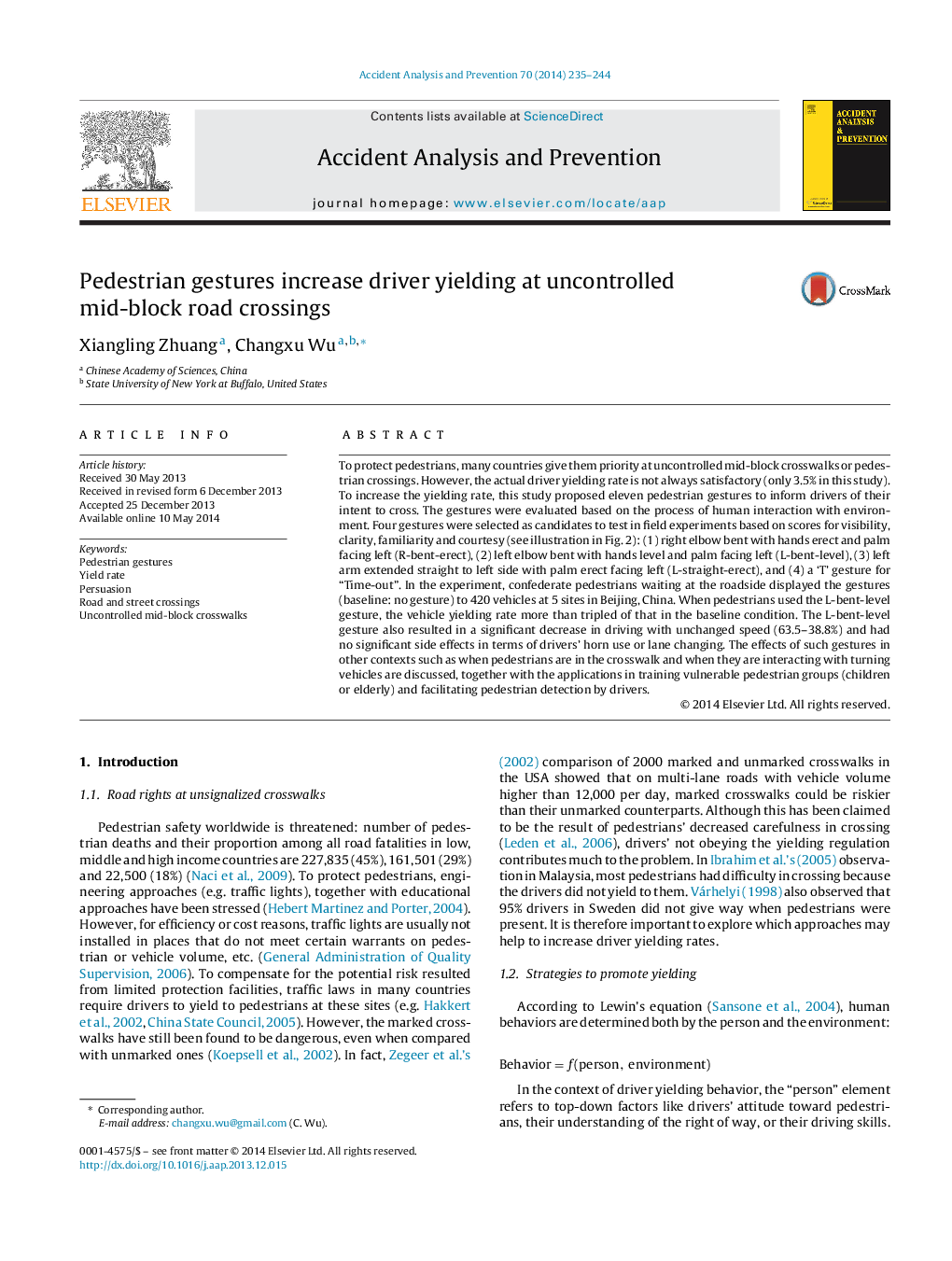| کد مقاله | کد نشریه | سال انتشار | مقاله انگلیسی | نسخه تمام متن |
|---|---|---|---|---|
| 572320 | 1452927 | 2014 | 10 صفحه PDF | دانلود رایگان |
• The baseline driver yielding rate is only 3.5%.
• The study proposed 11 gestures and selected four gestures after driver evaluation.
• The gesture L-bent-level leads to more than tripled driver yielding rate.
• Drivers passing by with unchanged speed decreased from 63.5% to 38.8%.
• No significant side effects of the gesture in terms of horn use and lane change.
To protect pedestrians, many countries give them priority at uncontrolled mid-block crosswalks or pedestrian crossings. However, the actual driver yielding rate is not always satisfactory (only 3.5% in this study). To increase the yielding rate, this study proposed eleven pedestrian gestures to inform drivers of their intent to cross. The gestures were evaluated based on the process of human interaction with environment. Four gestures were selected as candidates to test in field experiments based on scores for visibility, clarity, familiarity and courtesy (see illustration in Fig. 2): (1) right elbow bent with hands erect and palm facing left (R-bent-erect), (2) left elbow bent with hands level and palm facing left (L-bent-level), (3) left arm extended straight to left side with palm erect facing left (L-straight-erect), and (4) a ‘T’ gesture for “Time-out”. In the experiment, confederate pedestrians waiting at the roadside displayed the gestures (baseline: no gesture) to 420 vehicles at 5 sites in Beijing, China. When pedestrians used the L-bent-level gesture, the vehicle yielding rate more than tripled of that in the baseline condition. The L-bent-level gesture also resulted in a significant decrease in driving with unchanged speed (63.5–38.8%) and had no significant side effects in terms of drivers’ horn use or lane changing. The effects of such gestures in other contexts such as when pedestrians are in the crosswalk and when they are interacting with turning vehicles are discussed, together with the applications in training vulnerable pedestrian groups (children or elderly) and facilitating pedestrian detection by drivers.
Journal: Accident Analysis & Prevention - Volume 70, September 2014, Pages 235–244
